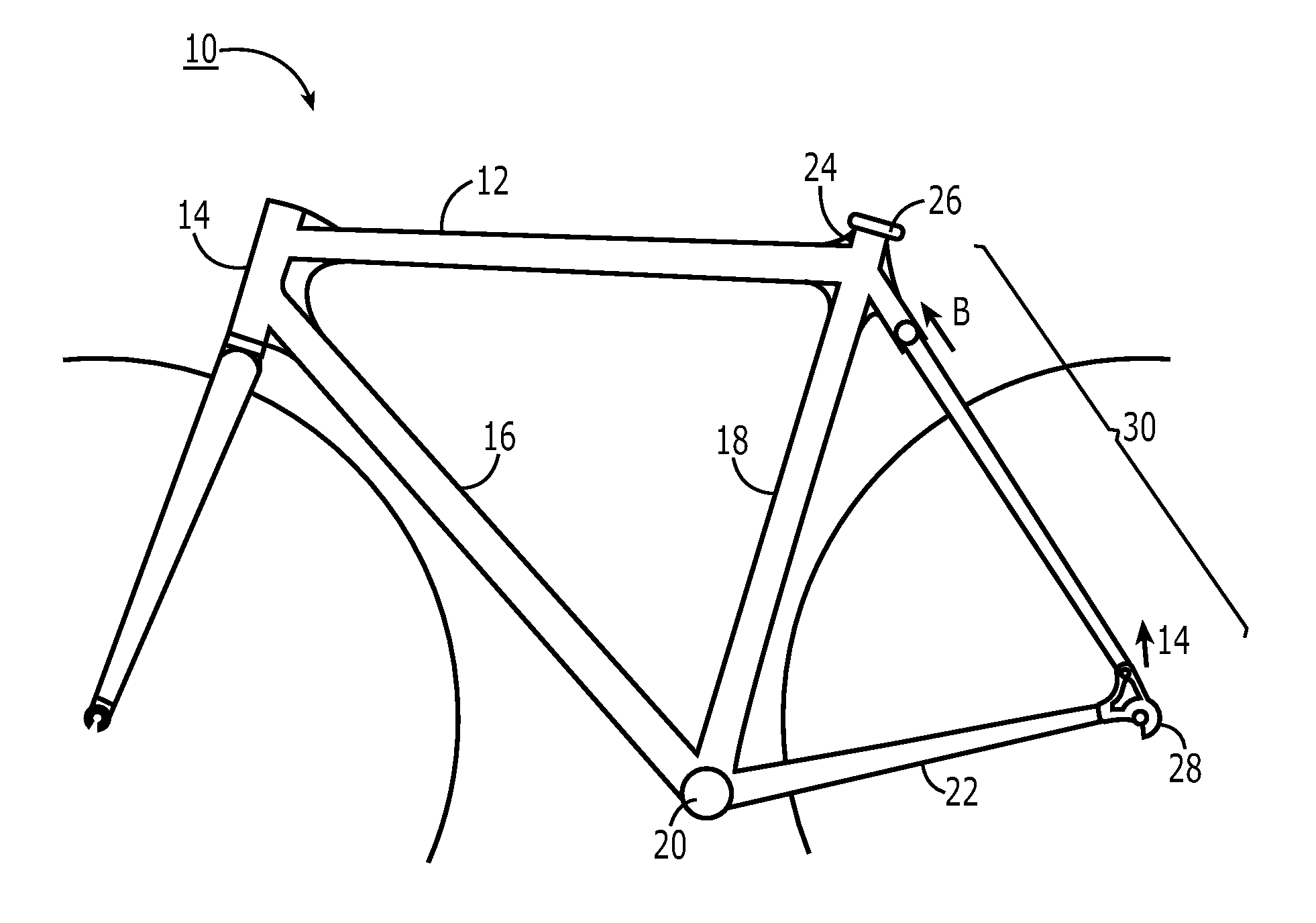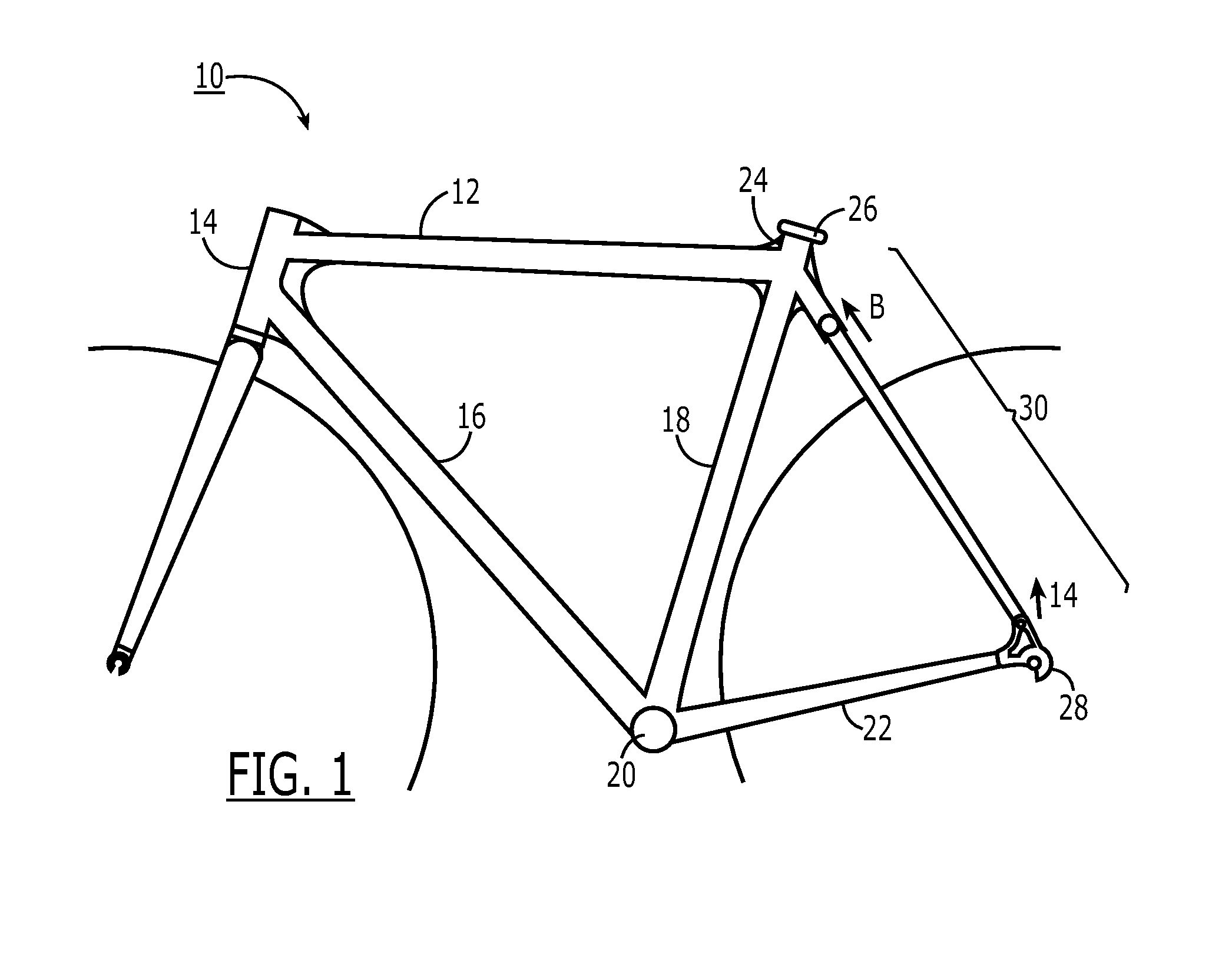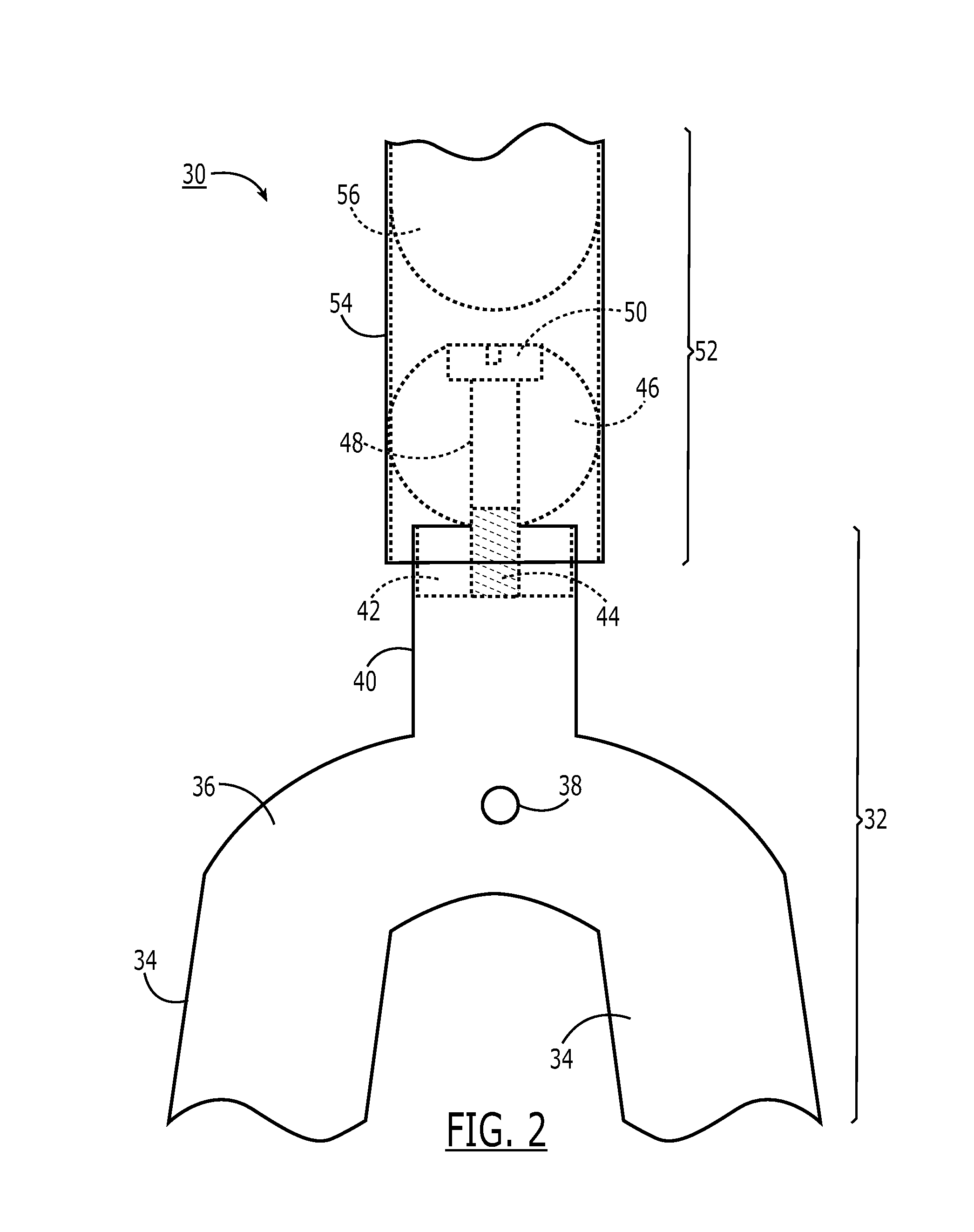Simplified rear suspension for a bicycle or the like
a rear suspension and bicycle technology, applied in the field of bicycle suspension systems, can solve the problems of reducing the effectiveness of shock absorption, enhancing rigidity, and reducing the weight of prior art rear suspension bicycle frame arrangements, and achieves the effects of reducing stiction, increasing shock absorption, and widening the force vector
- Summary
- Abstract
- Description
- Claims
- Application Information
AI Technical Summary
Benefits of technology
Problems solved by technology
Method used
Image
Examples
Embodiment Construction
[0026]With reference first to FIG. 1, a bicycle frame 10 (or similar structure) is comprised of a top tube 12 connected to a head tube 14, which is in turn connected to a down tube 16. Down tube 16 and a seat tube 18 are connected via a bottom bracket structure 20. Seat tube 18 and top tube 12 connect at a seat junction 24 such that a seat post (not shown) may be introduced into seat tube 18 and clamped in place by a clamping mechanism 26. A pair of chainstay tubes 22 are connected at a first end to bottom bracket structure 20, and at a second end to rear wheel dropouts 28. Connecting seat junction 24 and rear wheel dropout assembly 28 is seatstay arrangement 30. Optionally, chainstay tubes 22 are removably connected to rear wheel dropouts 28.
[0027]With reference now to FIGS. 2 and 3, seatstay arrangement 30 comprises a first portion 32, which is essentially a wishbone having a pair of seatstay tubes 34 connected together at a first end by a crown 36, and connected, preferably remov...
PUM
 Login to View More
Login to View More Abstract
Description
Claims
Application Information
 Login to View More
Login to View More - R&D
- Intellectual Property
- Life Sciences
- Materials
- Tech Scout
- Unparalleled Data Quality
- Higher Quality Content
- 60% Fewer Hallucinations
Browse by: Latest US Patents, China's latest patents, Technical Efficacy Thesaurus, Application Domain, Technology Topic, Popular Technical Reports.
© 2025 PatSnap. All rights reserved.Legal|Privacy policy|Modern Slavery Act Transparency Statement|Sitemap|About US| Contact US: help@patsnap.com



